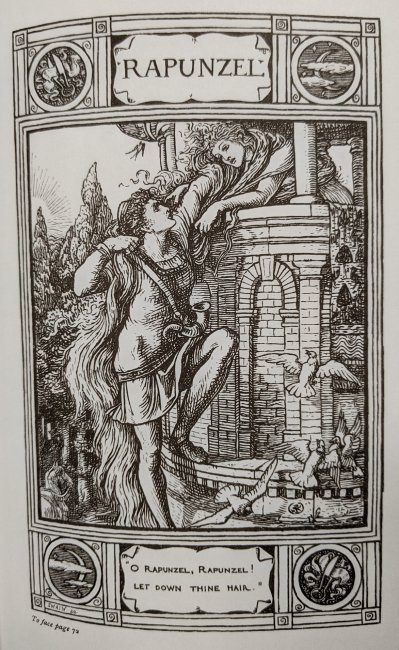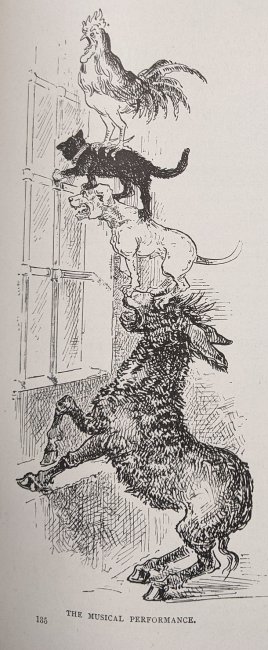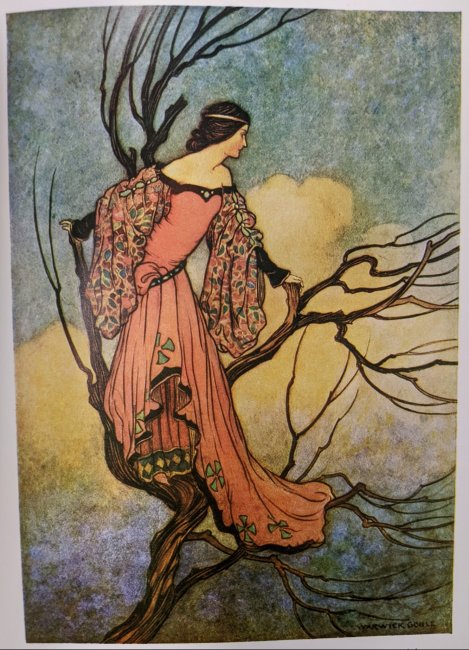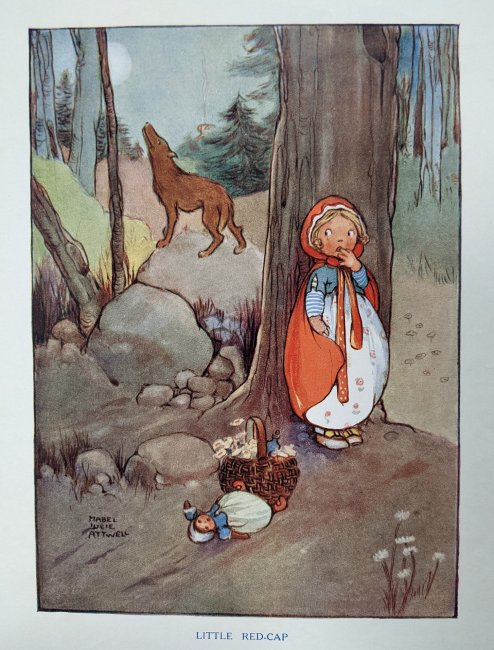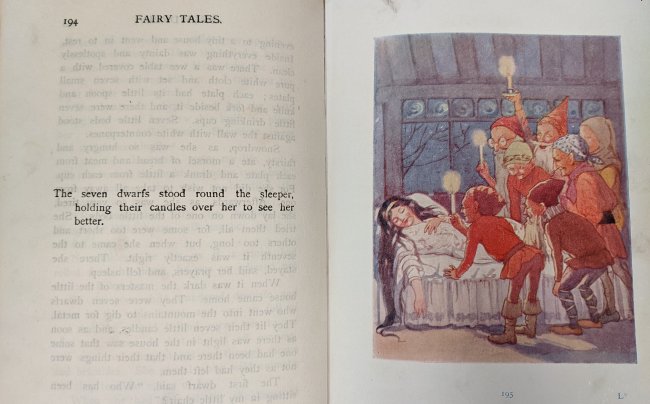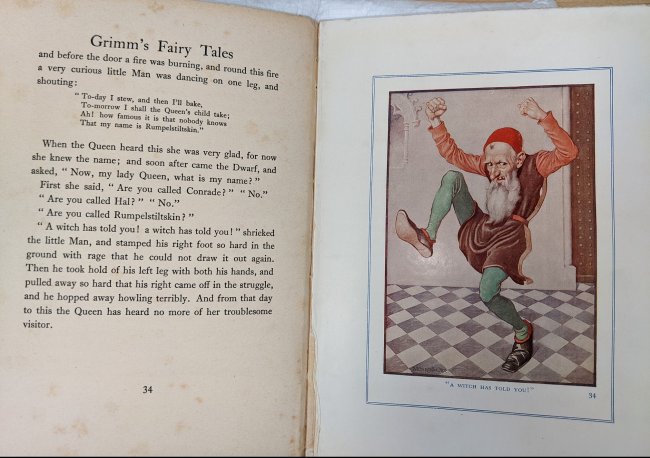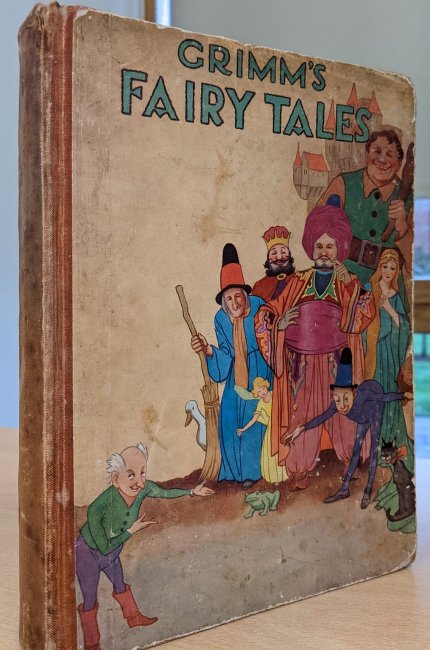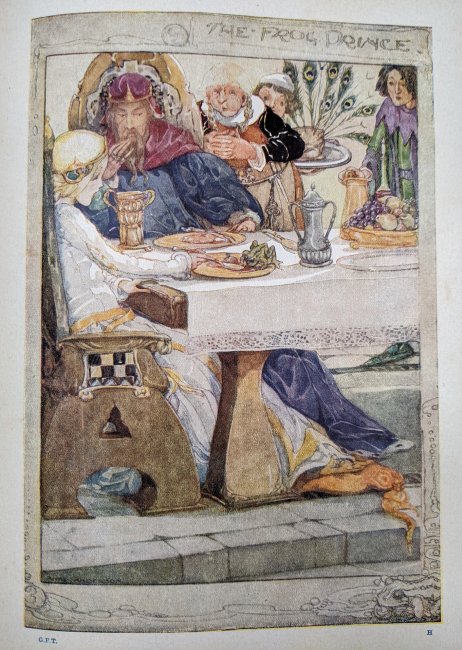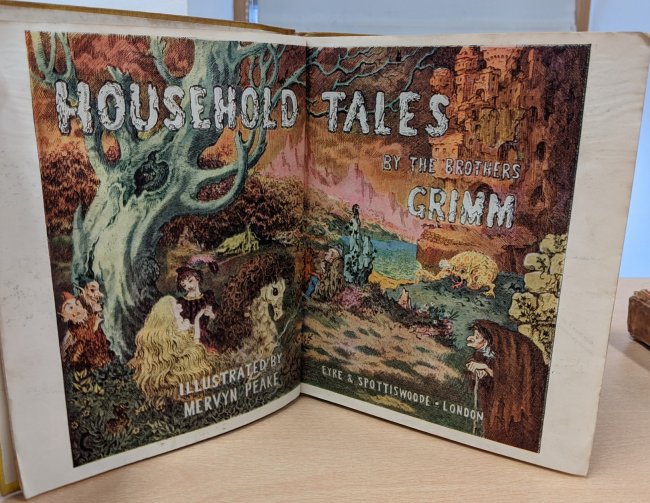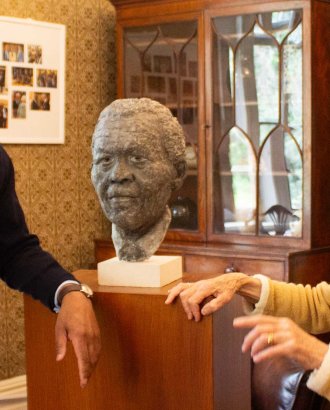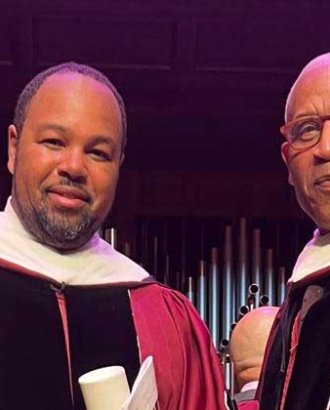On 20 December 1812, the Brothers Grimm published the first volume of their famous fairy tales, entitled Kinder- und Hausmärchen which translates as Children’s and Household Tales, but which is popularly known as Grimms’ Fairy Tales.
Brothers Jacob (1785–1863) and Wilhelm (1786–1859) Grimm grew up in Hesse, in the heart of Germany. Still one of the greenest areas of the country, during the Grimms’ childhood it was even more heavily-wooded than today. While it was no doubt a fertile breeding ground for the fairytale imagination, the 86 tales of the first volume that were collected and told by the brothers had origins that were shrouded in the mists of time. Many came from Germany but there were others tale that came from France and Italy.
For more than two centuries the stories have been a familiar part of the fabric of popular culture and literature. There have been countless editions, variations, and film adaptations.
Central to this has been artistic representation, from Rapunzel’s long, flowing hair to the bright crimson cloak of Red Riding Hood.
In this blog post we will delve into the library’s rare books collection to look at how some of the leading book illustrators of the late 19th and early 20th centuries interpreted the fairy tale world of the Brothers Grimm. All titles pictured are Homerton College Library’s own copies and all are first editions unless otherwise stated in the photo captions.
Walter Crane, 1882
Grimm’s Household Stories
[833 GRI(GHS)]
This edition of the tales was illustrated by renowned artist Walter Crane and translated by his sister Lucy, who died shortly after the book’s publication at the age of 40.
Crane is well-known for elaborate colour toy books such as The Baby’s Opera, but for this title he created black-and-white wood engravings for his plates.
The plate below depicts the familiar moment from Rapunzel when the prince uses Rapunzel’s hair to climb up to rescue her.
In contrast to the typical Disney portrayal of Rapunzel, here we can see Crane’s usual reverential treatment of his subjects. Crane’s interpretation of the fairy tales is about serious artwork for serious literature, age-old and meaningful – more than just bedtime stories.
Crane was in part inspired by Japanese woodcuts, and we can see this not just in his illustrations but in his ever-present signature, too. It wasn’t always the same, but in many cases the design consisted of a letter ‘C’ wrapped around a symbol of a crane, one of the great symbols of Japan.
Richard André, 1890
Grimm’s Household Fairy Tales
[LEA.MON.380a]
Mayfair-born William Roger Snow (1834-1907) went up to Cambridge in 1854 but by 1855 had left the university and signed up to the British Army. During his 20 years of soldiering he served all over the world while still finding time to publish books and plays and to paint. In 1875 he left the army under a cloud after an affair with a Dublin actress.
For the next two decades he wrote and illustrated a huge number of general and children’s literature, moving around and publishing under aliases to hide from the relentless scandal that pursued him. One of these pseudonyms was Richard André.
Homerton’s copy is a first edition of the version of Grimm that was freshly translated from the German by Ella Boldey and illustrated by André, published in New York in 1890 (with front cover artwork copyrighted 1891).
The illustration below accompanies the tale of The Town Musicians of Bremen. In the centre of the city of Bremen is one of the most famous works of public art in Germany, a bronze statute depicting the donkey, dog, cat, and cockerel, the ‘town musicians’ of the fairy tale. The statue depicts them in the story’s familiar pyramidal pose, as shown in the illustration below.
The story was included by the Grimms in their second volume of tales, published in 1819.
Warwick Goble, 1913
The Fairy Book
[823 MUL-D(FAI)]
Born in East London, Warwick Goble was an influential and prolific artist whose many commissions was H.G. Wells’s The War of the Worlds in 1898. But he is best-known as a leading figure in the golden age of the children’s gift book, which ran roughly from the 1890s until the end of the First World War.
Like contemporaries such as René Bull, Walter Crane and Edmund Dulac, he was inspired by Japanese art, and the new and improved printing techniques of the 1890s allowed his vivid watercolour illustrations to be brought to the page in all their glory, as exemplified by the stunning plate below.
The plate depicts a scene from the tale The Iron Stove. Here a princess is searching for her fiancee, a prince that she had rescued from an iron stove, in which he had been imprisoned by a witch. The princess is looking into the distance where she has spotted a light. She hopes it will lead her to her prince.
Mabel Lucie Attwell, 1914
Grimm’s Fairy Tales
[833 GRI(GRI)]
Born in Mile End, London, in 1879, Attwell was famous for her nostalgic, colourful, simple, illustrations that brought to life classics such as Alice in Wonderland and Peter Pan.
Four Grimm tales were drawn by Attwell for a 1910 edition published by Cassell, and in 1914 she gave us the beautiful illustration below, of Little Red Riding Hood (aka Little Red-Cap), and 12 other colour plates. This edition was for publisher Raphael Tuck’s famous series of gift books.
Margaret Tarrant, 1915
Fairy Tales
[LEA.MON.897]
This volume of fairy tales was published at the end of October 1915, at the peak of the gift book era. At 3 shillings at 6 pence (about £10 today), this was one of the more affordable titles.
Looking at the image below, you can almost imagine a reader sitting by a fire on a dark November evening in 1915 and feeling a warmth and glow from this illustration. This almost fairy-like depiction of Snow White (Snow Drop in this version) is typical of the work of illustrator and author Margaret Tarrant.
Monro S. Orr, 1916
Grimm’s Fairy Tales
[Lealan, uncatalogued]
The plate below is Scottish artist Monro S. Orr’s interpretation of one of the most famous of all characters from the Grimms’ fairy tales, Rumpelstiltskin.
Orr’s version was originally dated for 1916 but released in time for Christmas 1915. A contemporary review was sure that Grimm’s Fairy Tales would be on Father Christmas’s list of items for children’s stockings, and that ‘as he is a wise Santa Claus he will add, after the title of the book, “the edition pictured by Monro S. Orr”… for this is indeed an attractive “Grimm”, lavishly illustrated with coloured and black-and-white pictures’.
Anne Anderson, 1922
Grimms’ Fairy Tales
[833 GRI(GRF)]
Anne Anderson (1874-1952) was a Scottish illustrator whose commission for this 1922 edition of Grimms’ fairy tales was one of her best-known works.
The Frog Prince was collected by the Brothers Grimm and first published in 1812, but the story is an old German tale that goes back possibly as far as the 13th century.
Mervyn Peake, 1946
Household Tales
[LEA.MON.380]
The elaborate double title page below was the creation of noted author and illustrator Mervyn Peake, executed for this 1946 edition of the brothers’ tales.
He produced this at the peak (ahem) of his career, in the same year he published Titus Groan, the first novel in his famous fantasy series, Ghormenghast.
The composite scene from this illustration features famous characters and settings from Grimms’ fairytale world.
If you would like more information about the items discussed in this post, please either speak to a member of the library staff, email the team at library@homerton.cam.ac.uk or contact me directly on jb719@cam.ac.uk
